Transitioning from the classroom to online can be daunting and it is important that your learners are assisted during this process.
Let’s be honest change can be scary.
Here are a few guidelines on how your learners can be supported when they enter the world of online learning.
Step 1: Accessing the learning platform
An online platform or LMS, which stands for Learning Management System, is as easy to access as any website. The administrator will upload all new learners onto the LMS. Each learner will then receive an e-mail with the URL (address of the site) and a username and password. The option is there for the learner to log-in and change the password, or to leave it as the one provided. Each learner will be allocated to a course or courses by the administrator. A learner will only be able to access the courses for which they are enrolled. Viola, the learning can begin…
Step 2: Clear instructions
It is important that every step on the online platform is clearly explained to each learner. Whether you are a facilitator, assessor or learner, you need to know what to do and where to go. Instructions can be built in, in various ways. It can be as simple as including a step-by-step guideline, text or even a video tutorial.
Step 3: Access to an online tutor / facilitator
As a learner, it could be extremely daunting to let go of the classroom where you are used to simply asking the facilitator a question when you get stuck. Online learning doesn’t have to be different.
There are a number of ways that a learner can still have access to the course facilitator. The LMS offers chat’s, email support, forum discussions, and even live or pre-recorded webinars.
Step 4: Access to supporting documentation
There are different ways to teach on an online platform, video’s, activities, study guides to name a few. However, it is vital that all supporting documents, reference material and study guides are made available to learners for review at any time. The LMS allows for these items to be available for download for the learner to keep and reflect on when they need to.
Step 5: Assessments and POE (Portfolio of evidence)
What is learning without assessments, especially if you are doing an accredited course? How do you know if the learners are actually learning? This is where assessments both formative and summative are important. The LMS allows you to build in as many assessments as needed to test a learner’s knowledge and progress. The great news is that all this information is stored on the LMS. The system allows for setting up of more than one attempt at an assessment as well as different passing grades depending on the course requirements. Oh yes, in case you thought that this cannot be done, a learner’s POE can be compiled online too. Specific activities are created to assist the learner in building a POE. Documents can be downloaded, completed, and uploaded again.










